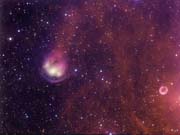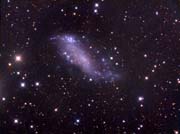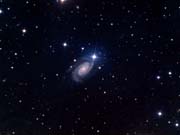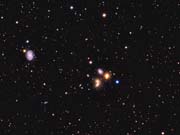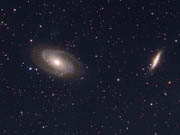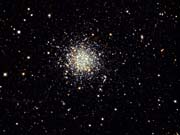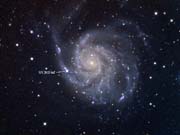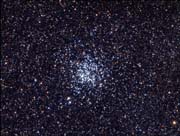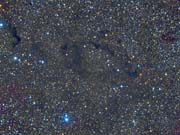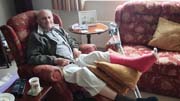I first attempted the very faint HFG1, PN G136.3+05.5 in Cassiopeia at the November Galloway Star Party 2022. Discovered in 1982, full name Heckathorn-Fesen-Gull 1. Such an interesting target, so I persevered with it and despite the awful weather recently I've managed to acquire more data. I used a different off-axis guide star than for Galloway, so had to start again from scratch. Bicolour, Ha and OIII. SII was pretty well negligible so ignored. Eventually I managed 23 H-alpha and 22 OIII 20 minute subs over a number of nights, some crisper than others. QSI 683 on SharpStar 140 refractor with TS2 flattener and Starlight Xpress AO unit. Last batch on 16th-17th January 2023. That set slightly compromised by extra sky glow due to snow covered ground. I also then collected data for the background stars, an image consisting of 5 x 2 minutes each IR, Red, Green and Blue.
So I used Steve Cannistra's method mainly to process the two colours, along with a bit more juggling, in particular using StarNet++ to remove the stars. Then added the RGB image for stars. And this is the best I can get. My skies here are simply not dark and clean enough to get the best of this very faint target. But c'est las vie! HFG1 is moving relatively quickly so the bow shock wave is clearly visible as is a tail of Hydrogen gas. The smaller planetary nebula is magnitude 14.3 PK 136+ 4.1
